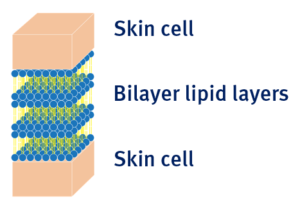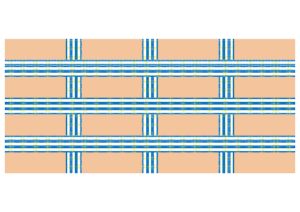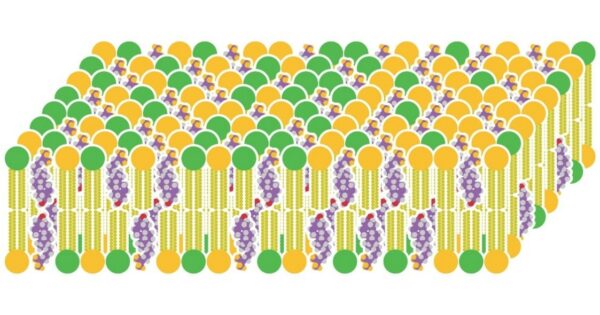Go Back
DEHYDRATION
DRPW Skin types have a defective skin barrier. This means that water evaporates off of the skin in a process known as transepidermal water loss (TEWL). The evaporation of water from the skin leads to dehydration.
The skin barrier

The skin barrier is a layer of lipids (fats) that surround the skin cells (keratinocytes). These lipids are made up of cholesterol, fatty acids and ceramides that surround the skin cells in multiple layers.

These bilayers of lipids surround each keratinocyte.
The lipids fit together like puzzle pieces to form a complex 3D structure whose function is to prevent water from evaporating off of the skin.

The skin barrier has these 3 lipids: Purple = cholesterol, orange = fatty acids and green = ceramides.
How does an impaired skin barrier affect the skin?
When the skin barrier is not intact, holes in this protective layer allow water to evaporate off of the skin in a process called transepidermal water loss (or TEWL).

Dehydrated Skin Is More Likely To Develop One or More of the Following:
- Decreased skin radiance – Dry skin does not reflect light well due to its rough surface. This makes the skin look dull and unhealthy.
Eczema – Also known as atopic dermatitis. This is causes when a defect leads to improper formation of the skin barrier. This can be due to genetics or environmental exposures.
Xerosis – This is another name for dry skin caused by a decreased amount of water in the skin.
Pruritis/ itching – Dry skin often feels rough and itchy
Ashy skin – Darker skin types get an ashy color when the skin is dehydrated